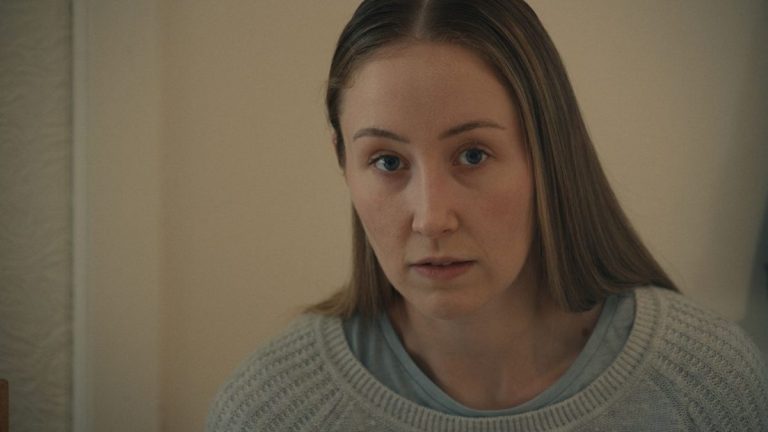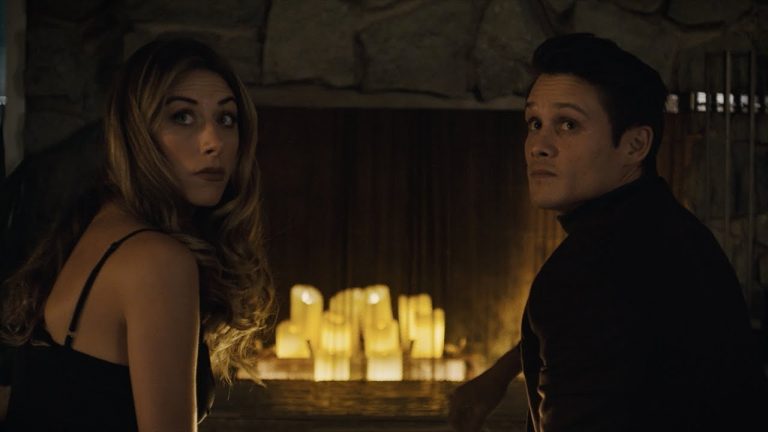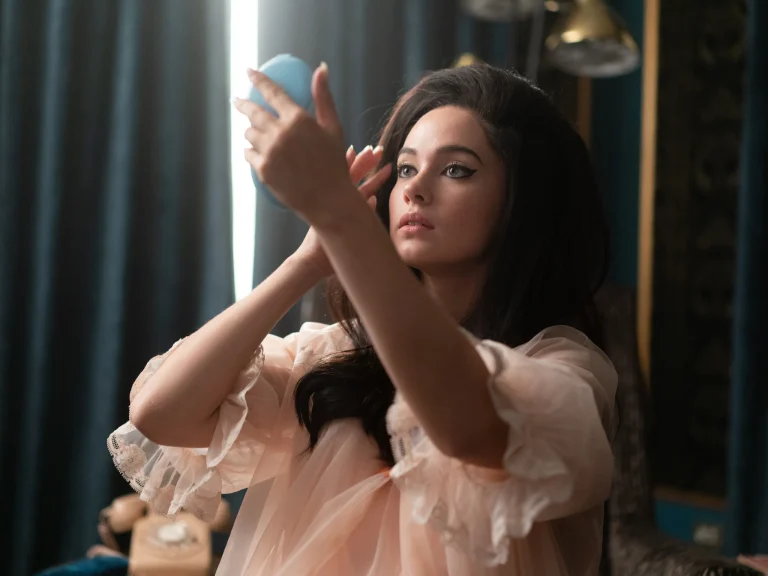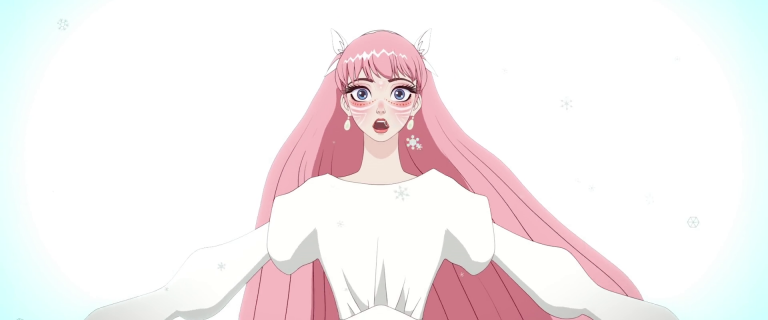Netflix’s new original ‘The House (2022)’ is a stunning stop-motion anthology series that certainly surprises with its titular plotline. About an hour and a half long, the series covers three individual stories set in 3-different settings. Featuring the voice of Mia Goth, Jarvis Cocker, Susan Wokoma, and Helena Bonham Carter, the Netflix anthology is produced by the UK-based Nexus Studios.
Directed by experienced animation filmmakers like Emma de Swaef, Marc James Roels, Niki Lindroth von Bahr, and Paloma Baeza, the anthology is a collection of incredibly imaginative stop-motion animation and horror stories.
Here is a complete chapter-wise analysis of The House (2022), now streaming on Netflix:
Chapter 1: An original horror story by Marc James Roels and Emma de Swaef
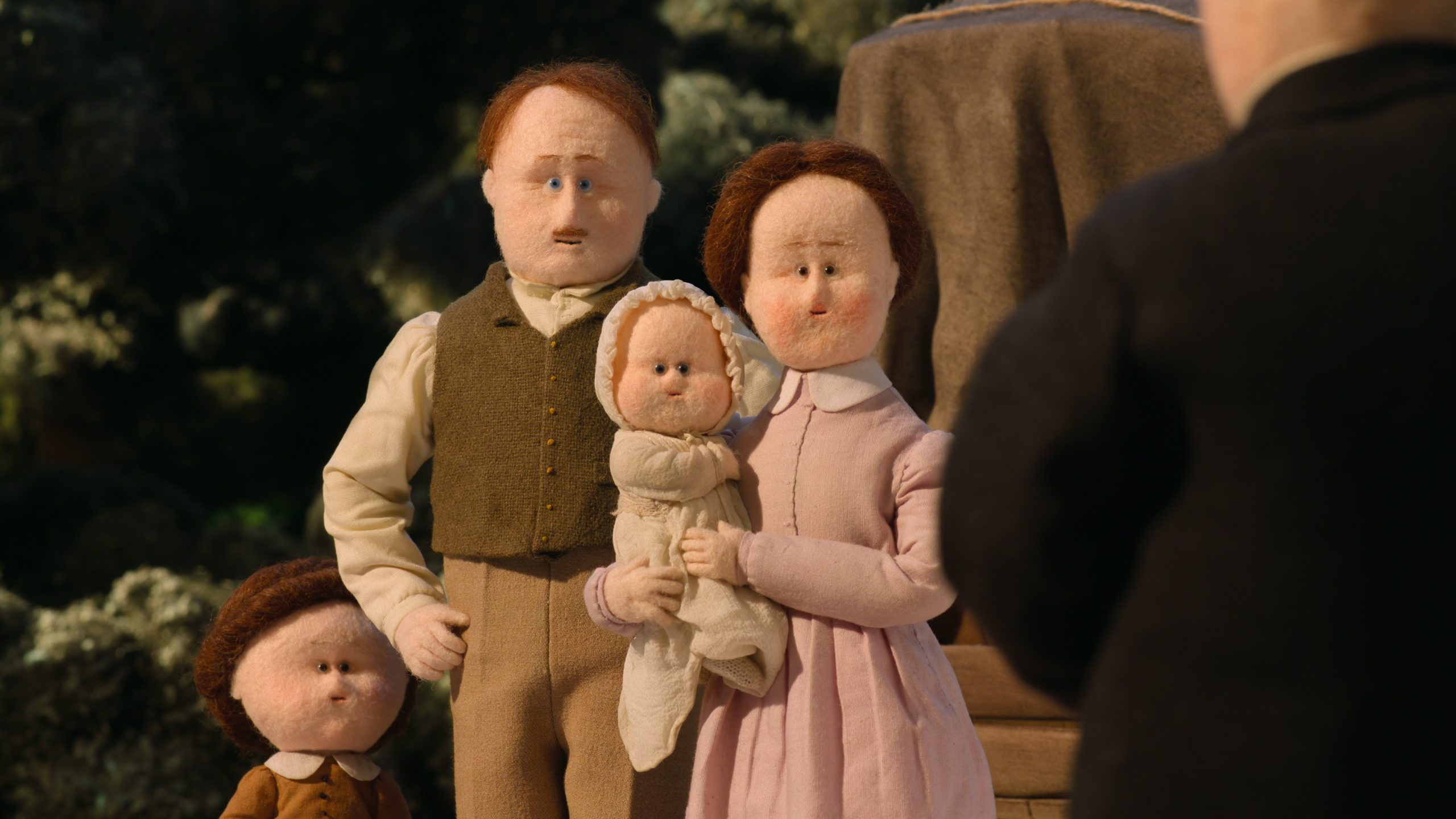
The first chapter opens with an ominous atmosphere. A family of human beings (animated with gorgeous hand-puppet animation) who live a satisfactory life in a cozy cottage get a quick visit by their nosy, ‘not-nice’ relatives. Upon the visit, one of the judgmental relatives mocks the man of the house for being a failure who can’t provide a proper lifestyle for the family.
Humiliated by such a crass statement in front of his wife and two little girls, Raymond drinks through the night and takes off for fresh air. In a drunken state, he meets a mysterious man who makes ‘some sort of arrangements’ with him and returns home in the middle of the night demanding his wife for food. Puzzled with her husband’s eerie behavior, she tries to question him about his sudden hysterical mood, but he soon passes out right on his food plate.
The next morning, the doorbell rings and a strange but sharp-looking man arrives. The man explains to the Mrs. about the deal her husband had arranged with his master – a celebrated architect looking to build an exquisite house for them at no cost. The humiliation and the greed to get a luxurious life make the couple agree to this unusual offer.
Instinctively, they move into a grand mansion on the other side from their beautiful little cottage – only to find that the house has certain oddness about it. While Mr and Mrs. quickly settle in the house, the children find the atmosphere rather spooky and unsettling.
Soon the architect of the house starts making random changes to the new abode and surprises the parents with matching outfits that would go well with the décor of the house. The silence and darkness of the house frighten the children as they come to know about horrendous secrets as the story unfolds.
Coming to the short itself, we don’t get to see many horror stories in stop-motion. The first chapter has a unique bedtime frightening vibe that goes well with the animation. The characters are hand-puppets, and they do look alive with their large forehead, rosy cheeks, and puffy-faced human expression. The plot then moves into obscure and tragic storytelling that becomes a little obvious.
Mia Goth plays the first daughter of Raymond in the story and bowls the audience over with her innocent, curious voice even with the limited screen space for any expressions. The visuals are also quite impressive as they cleverly blend with the menacing sound and production design.
Besides, the realistic hairy-textured humanoid figures, the evil laughter, and other spooky touches also add to the shorts’ overall impact, making the story pretty memorable.
Chapter 2: A Masterwork of an exceptionally creative animation by Niki Lindroth von Bahr
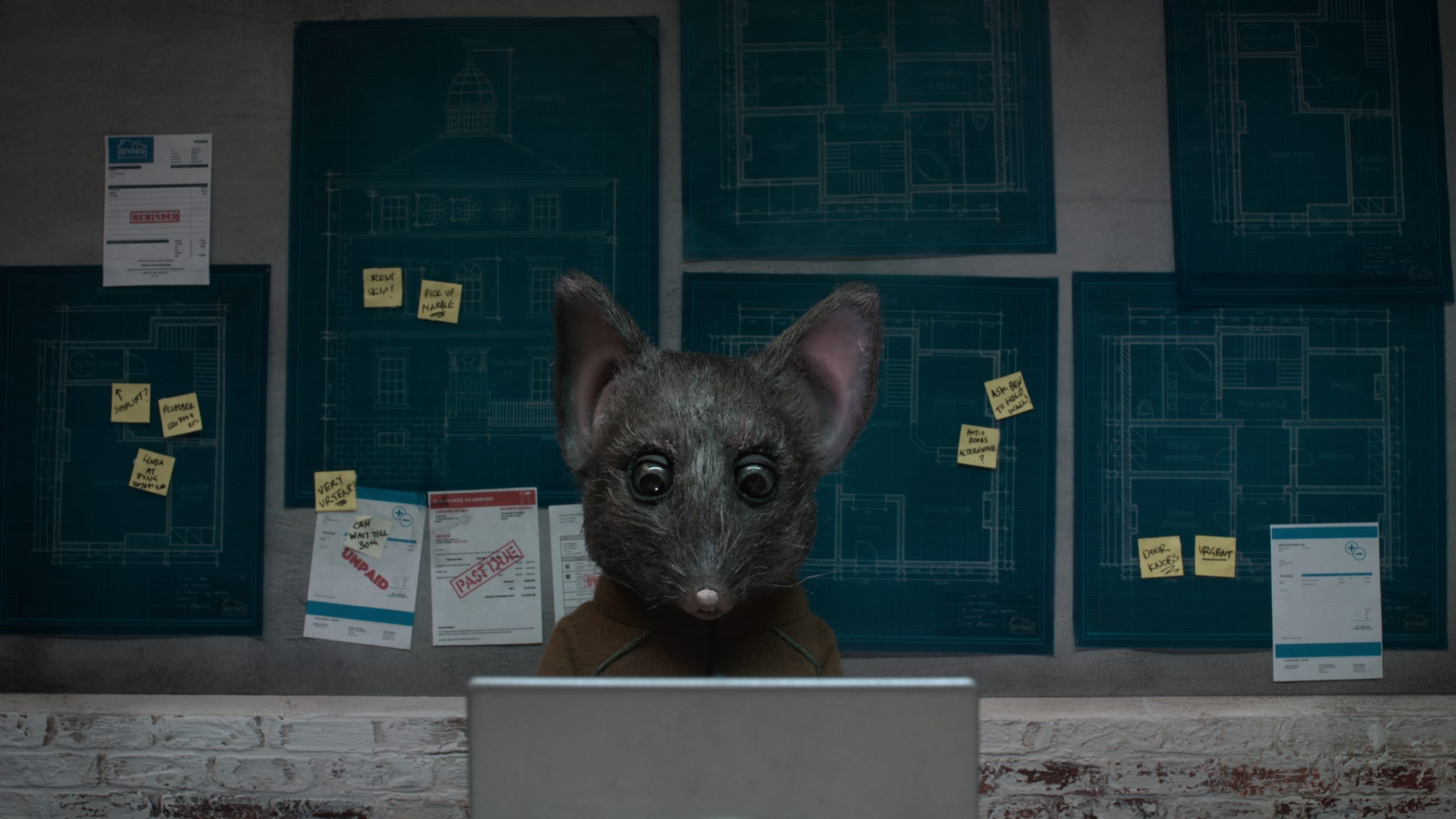
The second chapter of The House is set in a modern world with an anthropomorphic rat as the protagonist. He is a struggling contractor who wants to make good money by selling off the house he has been renovating.
While the world around him is facing recession, he has dedicated all his life’s savings and investments to developing a ‘state-of-art’ house that will help him build a secured future. As he rounds off with the last-minute completion process of the renovation, he finds out that the house has a persistent problem of bug infestation. Added to that, he is also faced with calls from nagging bankers who demand him to start paying off his dues.
To meet the urgent demands of his investments, he prepares himself for a successful ‘open house’ event the next morning. As his luck calls for, everything that he had imagined for the event takes a sharp turn when he meets an elderly couple who are ‘very much interested in the house’.
It goes without saying that the second chapter is more interesting, and more unique in its approach when compared to the first one. Using a real-life scenario (read: recession) as the backdrop makes the portrayal of the character feel grounded. These scenarios also give an absurdity to it all.
As the protagonist loses his grip on reality, the story reaches its heights of darkness with the use of grotesque animation that includes creepy-looking bugs and roaches. It is a standalone animation story in the anthology because of its impressive detailing and eccentricity.
Chapter 3: A double whammy of Wes-Anderson and Tim Burton by Paloma Baeza
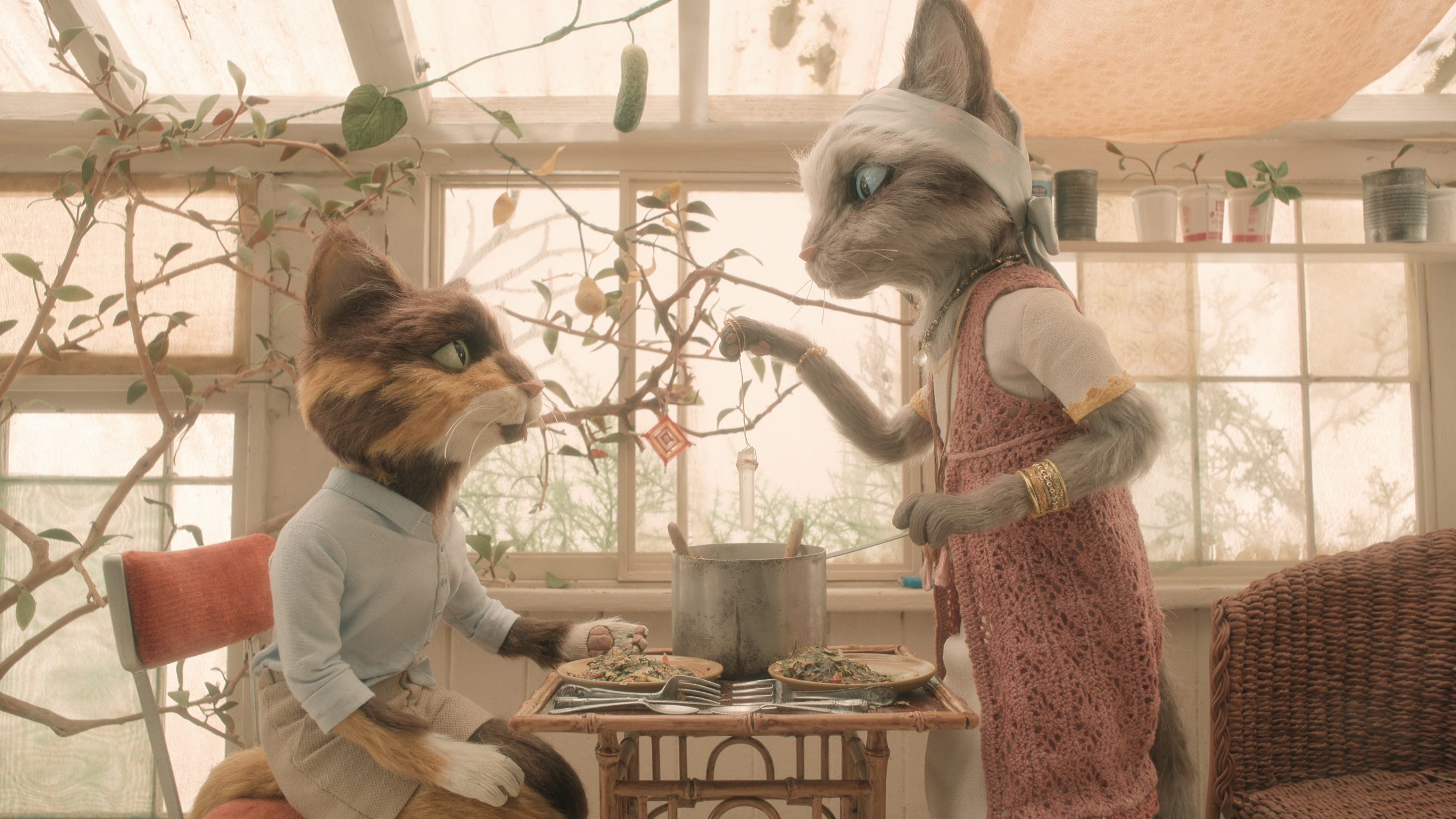
The third chapter of The House on Netflix is about looking forward in life. The last leg of the anthology is set in a post-apocalyptic backdrop. The city has been devasted by the floods and the residents who happen to be cats have left the place for good.
The only living beings are – a ‘cat’-landlady, Rosa, who desires to renovate her house. Unfortunately, she has no money, and her two tenants only pay rent in fish and crystals. Each day, the landlady wakes up with optimism to finish the renovation, but the lack of proper tools and resources only adds to her disappointments.
When one of her ‘spiritually-inclined’ tenants offers her lunch, she gets to know a new tenant may come by to help her. She disapproves of a free bed in the house and gets annoyed when a chatty presence of a mysterious man is felt the next morning. Things suddenly become grim for the landlady when one of her other tenants also decides to leave.
The last chapter is rather dull, in spite of its beautiful foggy backdrop, chatty characters, and the predictive hopefulness in the plot. However, the vivid imagination of the animation feels like a straight inspiration from the wild side of Tim Burton (in terms of lighting and costumes) and Wes Anderson’s rich-life characters from Fantastic Mr. Fox, still makes things interesting.
Overall, the stories in The House feel connected to one another due to the presence of the house itself. While each of the stories had a different vibe and uniqueness to it, the themes it explores make them independent. These segments explore themes of blindness due to greed, existential dread, detachment issues due to unfulfilled desires, in a pretty authentic manner.
What I enjoyed about the anthology was that none of the stories dragged on unnecessarily, and limited themselves to a sharp 30 minutes runtime. As far as the combination of stop-motion animation and the horror genre is concerned, there are very few examples of original stories that use the scope of the genre to its full force. The House features original stories that stand out just on the grounds of how wild and weird the world created becomes. However, this special by Netflix completely stunned me, and I wish more creative stories are brought to the platform.




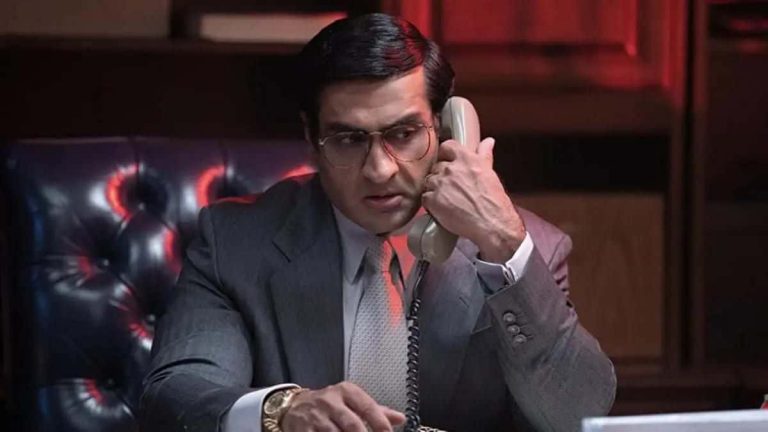
![Fashionista [2017]: Fantasia Film Festival Review](https://79468c92.delivery.rocketcdn.me/wp-content/uploads/2017/08/1257888_Fashionista-Amanda-Fuller-1.jpg)
